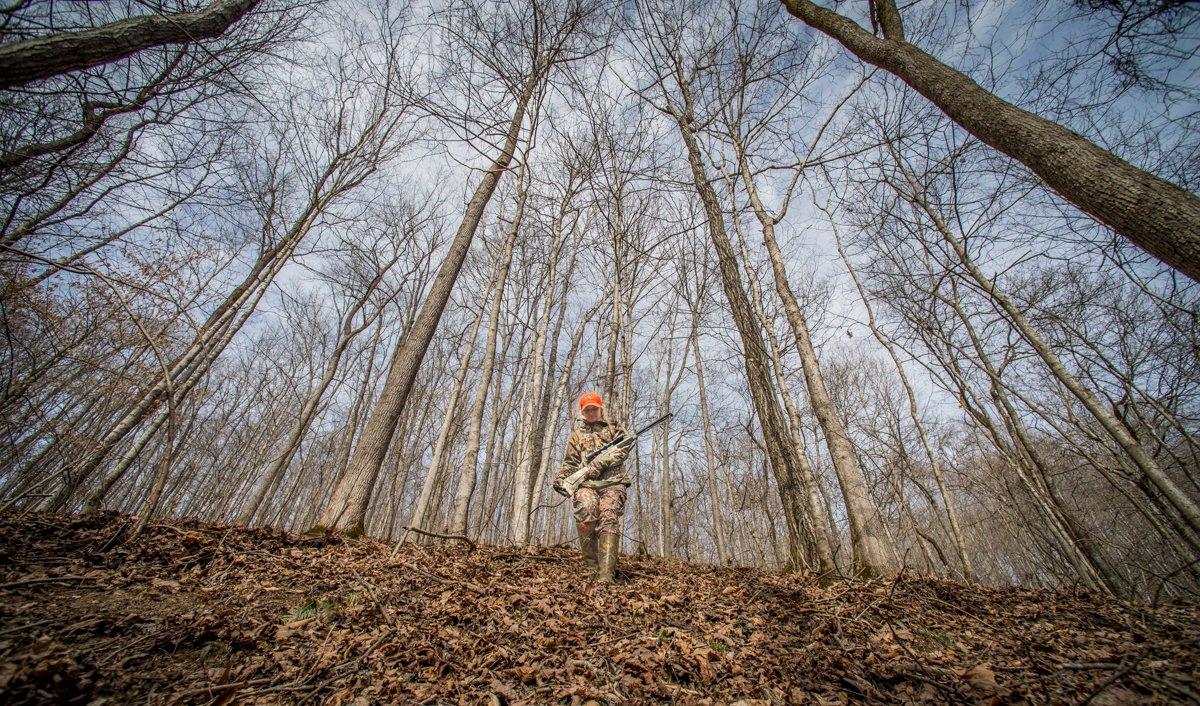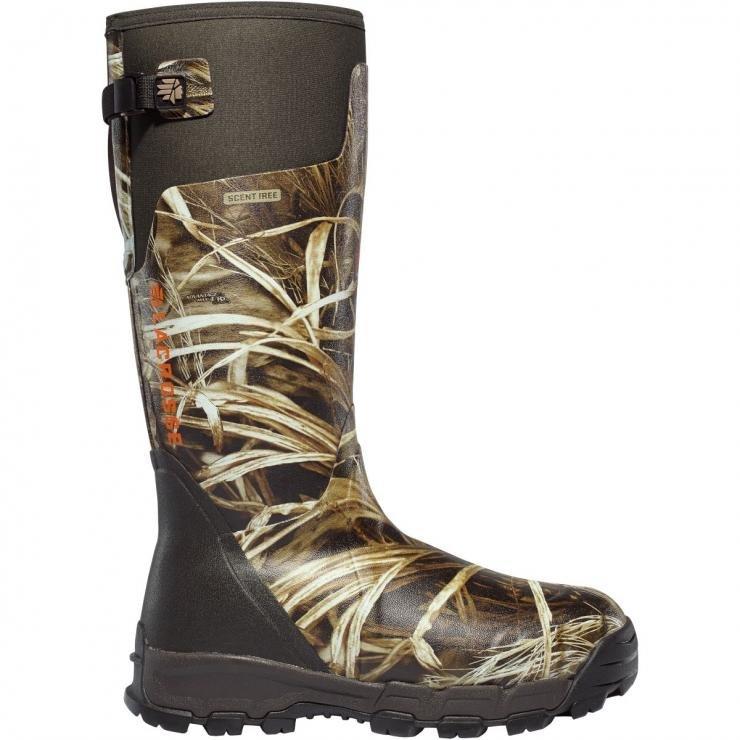What Do You Know About Native Plants?
Unless you don't read hunting magazines or watch hunting shows on television, you've probably noticed how popular hunting over food plots has become. Every magazine has articles on how to grow food plots, how to care for food plots and how to hunt over food plots. Few magazines discuss the percentage of food plots that fail.
Not all hunters are green thumbs and most diehard hunters have tried planting a food plot and failed. Every time a food plot turns brown, it's like flushing green down the toilet. Lime, fertilizer and seed that cost a small fortune can turn a small food plot into an investment that costs hundreds of dollars. Don't get me wrong, hunting over a food plot is fun and rewarding when it turns out. However, food plots don't always turn out.
For those of you who don't have a lot of money and have a brown thumb but still want to reap the benefits of hunting over a food plot, maybe it's time to consider going natural. That's right, you can have a lush, green food plot without buying seed. It just requires a little elbow grease.
C.J. Winand is a nationally known outdoor writer and deer biologist from Maryland. When Winand isn't penning articles for outdoor publications or performing his biology duties, he helps hunters manage their deer hunting property. Winand says many deer hunters overlook providing a natural food plot — no seed required. The forest floor is full of seeds from all kinds of vegetation that are waiting for sunlight to grow. With a little help from a landowner, a natural food plot will start sprouting in no time, Winand said.
Tenzing 3000 Big Game Hunting Pack in Realtree MAX-1
As trees grow and block sunlight from reaching the forest floor, vegetation, bushes, saplings and natural grasses cease to grow. The easiest way to promote growth is to remove a few trees.
There are several ways to get rid of trees. The most obvious one is to cut them down. Winand, however, prefers a technique called girdling. The cambium layer is the layer just under the bark of the tree that brings nutrients up and down the tree. To kill a tree, you simply need to make a one-inch deep cut with a chainsaw about an inch or two wide all the way around the entire circumference of the tree which will cause it to slowly die, Winand explained. Winand prefers girdling trees verses cutting them down completely because letting the trees stand provides nesting habitat for birds that hollow out dead trees for nests. It also eliminates the hassle and danger associated with cutting trees down. After you make a cut around the trunk of a tree, it doesn't take long for the tree to die and sunlight to reach the forest floor, Winand added.
To create a natural food plot, Winand believes that in most cases, only a few trees need to be taken down. Let's say a hunter wants to build a small food plot in the middle of the woods. Often there are two or three large trees that are the dominant canopy providers for the forest below. Killing them allows sunlight to reach areas that possibly haven't seen sunlight in decades. When the warm sun reaches the soil, vegetation will start to sprout, Winand noted. When most of us think about food plots, we think of clover, rye or brassicas. A natural food plot is often made up of young saplings. Deer love clover and other vegetation found in regular food plots but they also love the natural shoots and bark found on very young trees like oak, poplar and pine.
For the large trees that will be killed for the sake of the natural plot, another option is hinge cutting them. A hinge cut is when you make a large V-cut in the tree and allow it to stand. Usually in late fall or early winter, high winds will knock the tree down but it will survive for a year or two because part of the tree is still attached to the trunk since the hinge doesn't ever completely break off. While it is still alive it will continue to produce buds and leaves that will be accessible to the deer. If the tree falls during late fall or early winter, it will be a great food source when the deer need food the most, Winand explained. The great thing about the hinge cut is that all of the food that was 40 feet in the air and unavailable for the deer is now at ground level and can easily be eaten, Winand said.
In the spring, Winand can often be found hiking through his favorite honey holes with a bag of fertilizer draped over his shoulder. Winand could care less about fertilizing his lawn at home — that would just mean he has to mow more often! In the woods, however, fertilizer can help Winand harvest big bucks.
Throughout the United States, there are places where hunters will stumble across an old apple tree or two. Maybe a pear tree or other fruit tree seems out of place because other types of trees surround it.
When I find lone fruit trees, I try to take care of them. I fertilize them to help them produce a larger crop in the fall, Winand noted. Deer often come from great distances to eat wild fruit. Hunting near lone fruit trees can be a great place to hunt, especially if the tree has a large crop. I will lime fruit trees in the fall and fertilize them in the spring. I also prune them—removing dead branches and the undergrowth that takes nutrients from the tree. Doing these things allows the tree to produce a larger crop which will bring the deer in, Winand said. So how much fertilizer should be used? Use 1 pound of fertilizer for every inch of diameter a tree is. If it is 10 inches in diameter, use 10 pounds of fertilizer.
LaCrosse Alphaburly Pro Realtree MAX-5 800G Hunting Boots
Winand fertilizes fruit trees and often cuts down a few trees around a lone fruit tree to allow more sun in. An apple tree doesn't get very tall so it doesn't take long for larger trees around it to block the sun. I cut down a few trees around the apple tree to allow the sunlight to reach the apple tree. This often helps the tree produce a better crop. The big trees that get dropped around the apple tree provide great cover for the deer. The leaves from the large trees provide immediate food, Winand explained.
Winand cares for the fruit trees as well as the oak trees. White oaks produce acorns every year. Red oaks produce acorns every other year. I lime and fertilize both varieties on the properties I regularly hunt. To keep track of which red oaks will be producing, I keep a journal so I know which trees should be fertilized and which ones I can let go until next year, Winand said. By fertilizing oak trees, Winand ends up with lots of acorns to hunt over. Fertilizer definitely helps the oak trees produce a better crop and we all know that deer can't resist acorns. In years where many oak trees aren't producing due to a lack of water, providing oak trees with a little fertilizer can give them an extra boost.
Regardless of which type of tree needs fertilizing, Winand says many people make the same mistake by fertilizing the trunk. When fertilizing, spread the fertilizer on the ground a few feet away from the base of the tree where the root system is. This is where the tree collects its nutrients. The fertilizer should not be piled under the tree next to the trunk.
This concept can be taken one step further by providing a planted food plot alongside the natural one. Many companies make seed blends that are drought-resistant and grow in almost any type of soil. If you are taking time to cut trees down, raking and putting some seed on the ground can provide a natural plot and small clover patch next to it to hunt over. Many of the no-till blends cost less than $25 for a small bag and provide another option to attract deer.
By cutting trees, fertilizing trees and planting drought-resistant, low-maintenance seed blends, you can provide food and cover for whitetails and other wildlife without spending a lot of money. In today's economic climate, spending money is something most of us don't want to do much of. On the other hand, most of us are willing to work our butts off and sweat a little if it means improving the ground we hunt on.
Editor's note: This was originally published in 2009.
Bonus read: The Ultimate Deer Hunting Property
Click here for more food plots and land management articles and videos.
Follow us on Facebook.










